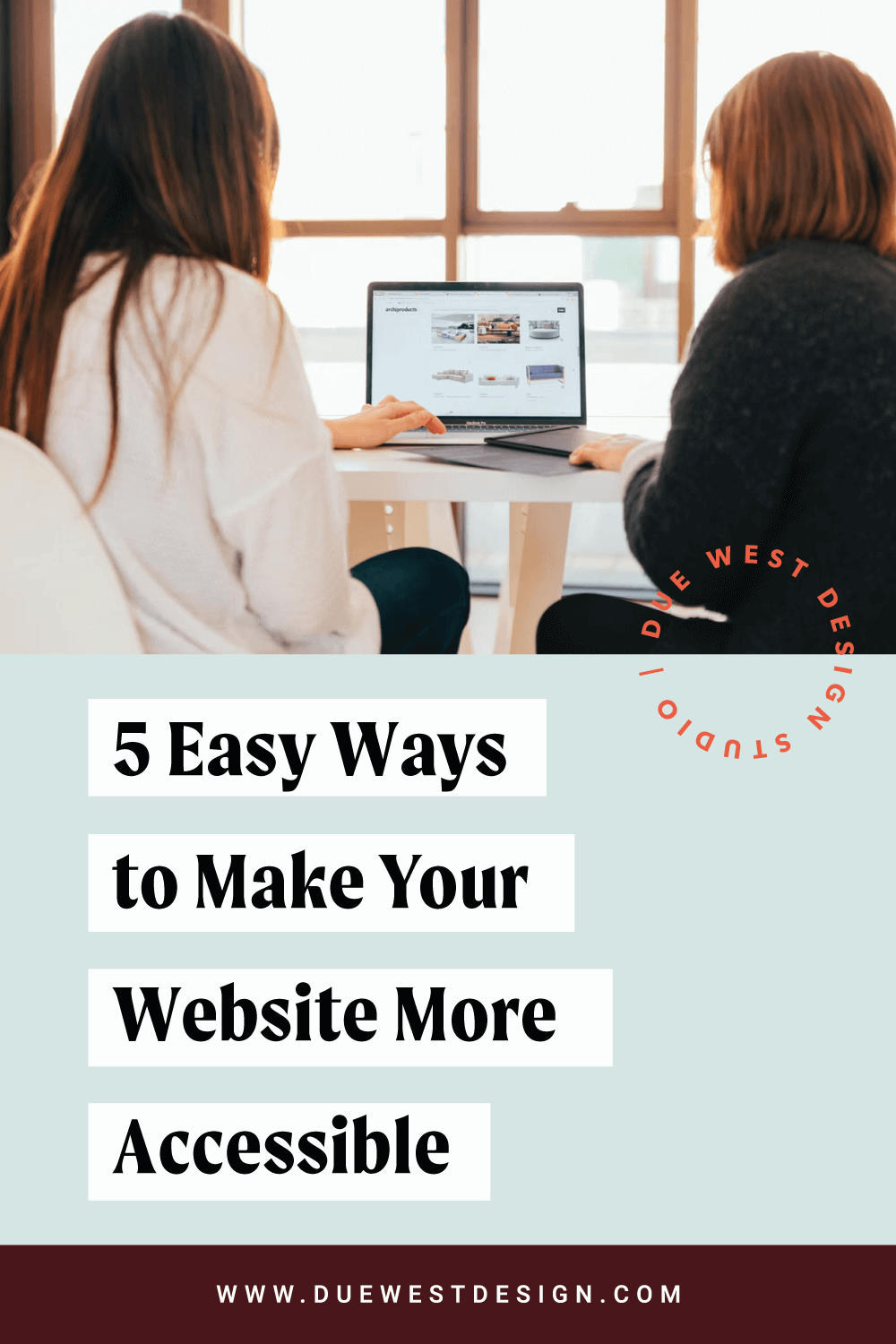5 Easy Ways to Make Your Website More Accessible
What is Web Site Accessibility?
Approximately 1 in 4 Americans has a disability, according to the Centers for Disease Control and Prevention. Hearing- and vision-related disabilities are among the six most common disabilities in the United States. Yet, many aspects of our society do not take these 61 million Americans with disabilities into account.
There are, of course, many reasons to care about accessibility for people with disabilities, including dignity and human rights. But unfortunately, for many businesses, it is the economic impact that drives them to take action. There is a huge economic impact: In 2021, e-commerce web sites lost an estimated $828 million this Christmas season as a result of poor web site accessibility, according to a study by the accessibility technology company UserWay.
An accessible web site means that more people can visit your web site and engage with the information, products, or services you provide. This is beneficial for everyone—it can help people with disabilities access information on your web site. It is also beneficial for you—more people will find and use your site. And as an added bonus, web sites with better accessibility also typically perform better in search engine results.
How Do I Make My Web Site More Accessible?
Great question! We have some tips for how you can get started making your web site more accessible for all of your customers and site visitors.
Add alt text to your images.
Adding alternative (“alt”) text to images on your web site allows a screen reader to describe an image to someone who is visually impaired. Alt text also improves your website’s SEO (search engine optimization) by giving Google more information about your web site.
Typically, you’ll find a field to add alternative text when you add a picture to your web site. On WordPress, you can enter alt text under “Image Details.”
Add captions or subtitles to your videos, podcasts, or audio clips.
For those who are hearing impaired, or those who prefer to read captions while watching video content, adding closed captions can improve your site’s accessibility to video or audio information. There has been a big movement on TikTok to encourage creators to use closed captions!
Many social media apps have a built in closed captioning feature that you can utilize. For longer videos, we recommend Rev for transcription and closed captioning services—they are fast, accurate, and reasonably priced. Check out their site here.
Write your page descriptions with accessibility in mind.
Your page description should quickly and uniquely identify what is happening on each individual page of your web site. This is a win-win situation for accessibility and SEO. In terms of accessibility, screen readers can quickly identify exactly what is on each page and help users find the page they’re looking for. For SEO, writing a clear and unique page description ensures your page will be optimized for your specific audience. Try to use keywords that are niche to your audience but also get googled enough that your page will be found (it can be tricky to strike that balance!).
Choose a color palette that allows for contrast.
One of the easiest fixes you can make to your web site is ensuring you have high color contrast. If your background color and text color have a low contrast, users will have a hard time reading your text, particularly people with color blindness and other visual impairments. Here is an example of high and low contrast text:
This color contrast checker can evaluate the color contrast on your web site.
5. Install a free accessibility plugin.
Accessibility plugins add a discreet submenu option to your site where users can click for additional usability options like enlarged text and increased contrast. We typically install UserWay on our client’s sites to help the site work better with screen readers, text size, and other formatting options so people with disabilities can better access the information.
UserWay also offers a paid subscription that is an AI-powered technology to ensure ADA compliance when required. Learn more about UserWay on their site.
If you’re familiar with 508 compliance, you know the standards can be high. However the vast majority of small business and nonprofit web sites can be improved and made more inclusive through easier, incremental steps like the five we’ve shared here. If you’d like to learn more, or continue the conversation, feel free to reach out to us at hello@duewestdesign.com!
Connect with Due West Design on Social
Know someone who might be interested in this article? Use the share buttons below to pass it on!


